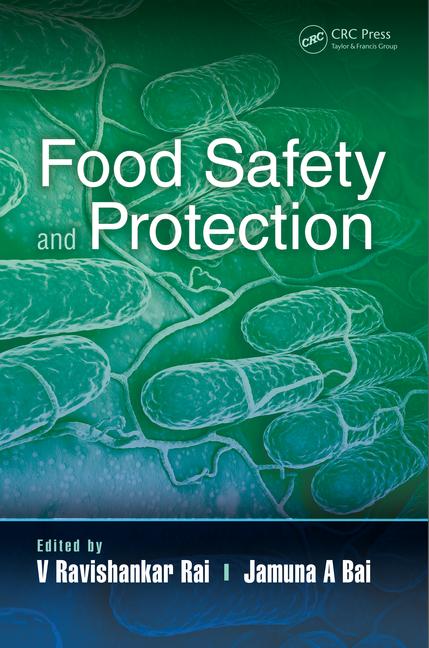Salmonella: Changes and Challenges

The Pathogen Reduction and Hazard Analysis and Critical Control Points (HACCP) Systems final rule was published in July 1996. In addition to mandating HACCP, the rule established performance standards for Salmonella in red meat and poultry carcasses as well as raw ground meat and poultry. According to the U.S. Department of Agriculture Food Safety and Inspection Service (FSIS), the pathogen reduction performance standards would verify a facility’s HACCP plan was effective in reducing Salmonella contamination.
FSIS made it clear that, after the 1996 publication, they expected the industry to develop and explore various technologies and innovations to reduce Salmonella levels—allowing the agency to promulgate new standards reflecting the reduction. All of this has certainly come true, and the meat and poultry industry has met the challenge with better process control and antimicrobial interventions that dramatically reduce the presence of Salmonella in products. The industry has also met objectives through information sharing and data collection. Now there are new challenges that go beyond the presence of Salmonella, generally, to the specific Salmonella serotype or even the pulsed-field gel electrophoresis pattern. This specificity is common in illness investigations, and if a sampled product is found to match, FSIS will request a recall when otherwise supported by epidemiological data. The agency has made it clear that this does not equate to all Salmonella being defined as an adulterant, but that FSIS has the authority to request a recall based on outbreak association.
SalmonellaTesting
From an industry perspective, it is not practical to do a large amount of Salmonella serotyping on raw products. Few laboratories offer the service, and those that do are expensive and Salmonella is not an adulterant. With current sampling equipment and techniques, it is necessary to treat all Salmonella as equal. Thus, the challenge remains the same—reduce Salmonella on raw products.
We can all wish for the day when serotypes can be identified in a few hours. Until then, I believe processors must have a baseline in relation to pathogenic microorganisms and consider controls and interventions to reduce that number.
We like to talk about how much “looking” we are doing. Testing, testing and more testing is an important motto, but it must mean something and not just be for the sake of doing something! While we admitted to testing for several years, it was not until our facilities became focused on the testing results that change started to happen. In 2008, we became part of the FSIS Salmonella Initiative Program. While participation in the program carries some controversy, it has helped focus our pathogen efforts and results. The moving window for our Salmonella sampling banished any ideas of just sample and record—it helped us identify trends.
Improvements in Salmonella Control
Our moving window charts heightened awareness, and ideas started flying as to what happened and how to make it better. Our focus through mapping studies on carcass interventions in the evisceration department gave us great results for slaughter. However, it was difficult to use these mapping studies alone to explain ground sampling results.
In late 2010, we began an intensive study that looked at what happens from chiller to finished ground product. We conducted baseline measurements on parts going to ground and tried to correlate our ground Salmonella trends with certain incidents in the plant and to identify potential interventions that would work. As you can see through this process, we have had to be fluid and innovative in our thinking.
 It came as no surprise that wings and necks present the greatest opportunity in ground product. In mapping necks, the biggest bang for the buck was intervention through the chilling system (see example in Figure 1). Moving away from chlorine for export purposes had its challenges, which were remedied using approved chemical intervention with minimal cost. We then moved to wings and tried to correlate using our own evisceration criteria for fecal and feathers. Wings are difficult to treat with spray interventions in evisceration due to the feather follicles and the bend at the joints within the wing itself. Additional studies are being conducted to determine whether in fact the wing can be pulled straight for better spray application and penetration of follicles. We are not opposed to adapting if that helps improve our results!
It came as no surprise that wings and necks present the greatest opportunity in ground product. In mapping necks, the biggest bang for the buck was intervention through the chilling system (see example in Figure 1). Moving away from chlorine for export purposes had its challenges, which were remedied using approved chemical intervention with minimal cost. We then moved to wings and tried to correlate using our own evisceration criteria for fecal and feathers. Wings are difficult to treat with spray interventions in evisceration due to the feather follicles and the bend at the joints within the wing itself. Additional studies are being conducted to determine whether in fact the wing can be pulled straight for better spray application and penetration of follicles. We are not opposed to adapting if that helps improve our results!
In addition, a correlation was noted between wings used for ground on days with opportunities for feather removal. Additional parameters around scald temperatures and picking equipment appear to have remedied this issue.
We have become creative on part interventions, considering a part pasteurization system using a shrink tunnel. This adaptation worked well for drums in one facility, but application on other parts and in different locations proved challenging—with results not as favorable as anticipated. We continue to consider dip tanks, augers and different spray applications. The biggest challenge with tanks and augers that increase dwell time and provide assurance on coverage is the footprint within the facility needed to install these applications. Sometimes different facilities require unique approaches to fit their needs. Our best results at this point come from various sprays throughout the boning process, using different chemical treatments that help shock the organisms. We continue to map various steps throughout the process to determine appropriate application points, delivery methods and interventions.
The industry has proven we can reduce numbers as illustrated in the new FSIS performance standards. The question from 1996 changes slightly to become, “Have we reached the point in which further reduction is not practical from a risk/benefit scenario at the plant level?” If so, is there appropriate technology to take us to the next level of rapid testing? The industry pulled together through data sharing and exploration to meet the challenge addressed through the 1996 Pathogen Reduction HACCP regulation. We have already seen industry and trade groups collaborating to discuss interventions at all levels of production, identify areas of research and look at lessons learned. With cooperation, our industry can face Salmonella challenges head-on and meet evolving standards by adjusting strategies.
Alice L. Johnson, D.V.M. is vice president of food safety, corporate quality and government affairs at Butterball.
Looking for a reprint of this article?
From high-res PDFs to custom plaques, order your copy today!




.png?height=200&t=1661887788&width=200)



